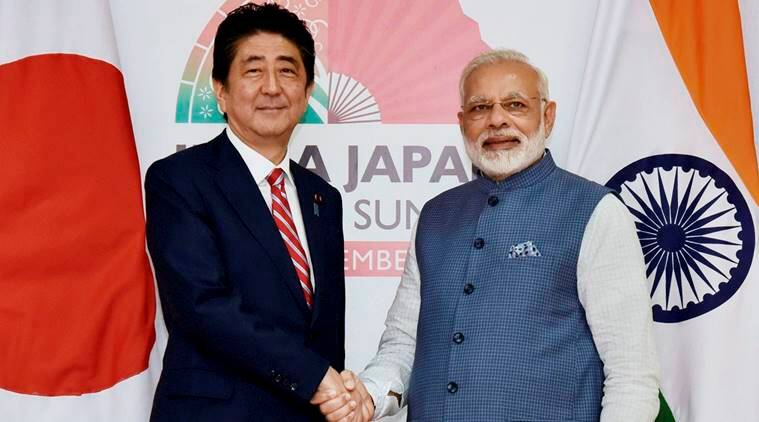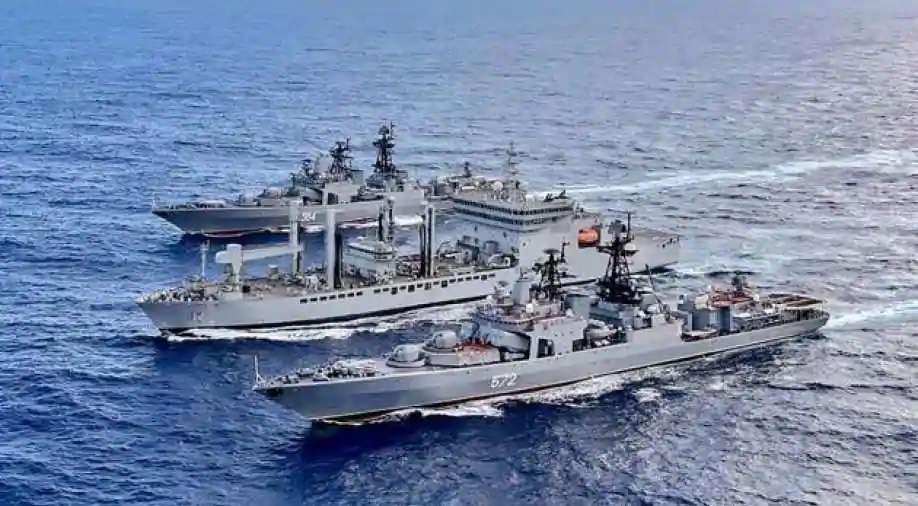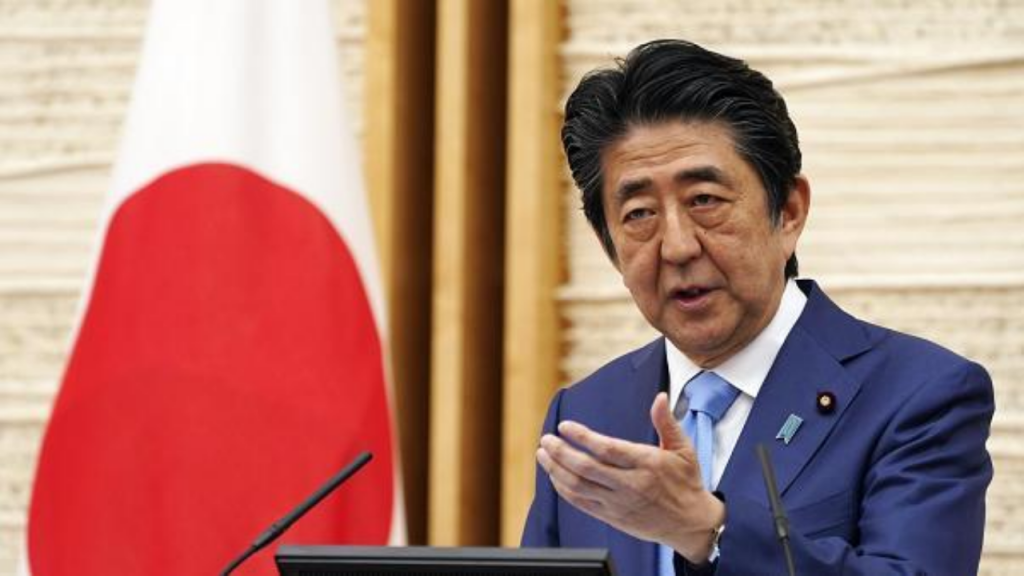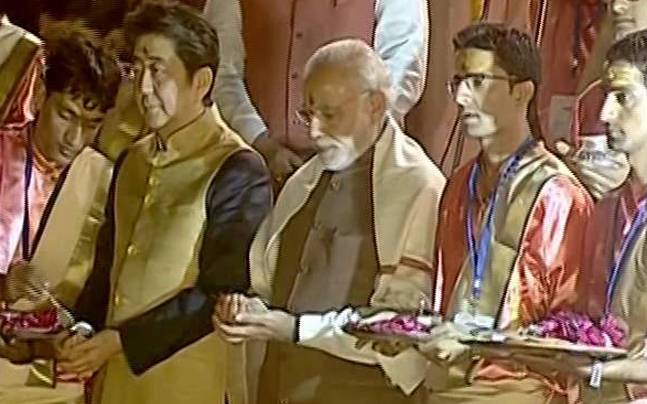
- Abe’s approach to foreign policy was seen as a radical change in Japanese politics since his first term. Though he continued the policy of his predecessors of improving relations with all countries, Abe took a hard-line stance against North Korea and China.
- From upgrading Japan-India relationship to initiating the QUAD, Abe has proven to be a friend of India like no other.
- In order to tackle expansionist threats, Japan and India inked the Acquisition and Cross-Servicing Agreement (ACSA) which will give the Indian Navy access to the Japanese military base in Djibouti and the Japanese Navy access to Andaman and Nicobar Islands.
- Under Abe, Japan emerged as an important source of overseas development assistance and foreign investment for India. New Delhi and Tokyo began to work together in Africa, working on alternative supply chains and on a strategic partnership in the Indo-Pacific region.
- The Abe era also played an instrumental role in enabling India’s economic modernisation. Tokyo is not just a leading source of Official Development Assistance (ODA), but also a top source of foreign direct investment. From mega industrial corridors, high- speed rail and modernising urban rapid transport system, Japanese development assistance has been instrumental in increasing India’s productivity and economic output.
- Shinzo Abe’s tenure will be the guiding light to the alliance and there is unlikely to be any loss in transition. The vibrant tenure of Abe also showed the areas in which the two countries have to continue to work on.
Former Japanese prime minister Shinzo Abe has been honoured with India’s second-highest civilian award Padma Vibhushan this year. He has been honoured in the Public Affairs field. The conferment of Padma Vibhushan to Abe is most justified given the fact that it was during Abe’s term that the ties between India and Japan rose to new heights.
Shinzo Abe was the longest-serving prime minister in Japanese history between 2012 and September 2020. Though he has served as Prime Minister of Japan for four terms, it was his third and fourth terms between 2014 and 2020 which coincided with Narendra Modi’s tenure, which contributed the most to the fruitful relationships between the two countries.
Abe’s approach to foreign policy was seen as a radical change in Japanese politics since his first term. Though he continued the policy of his predecessors of improving relations with all countries, Abe took a hard-line stance against North Korea and China. He always called out China’s machinations in the South-China sea, and its expansionist moves in the Senkaku Islands. He followed an independent foreign policy based on pragmatism and not on emotions tied to the past which was a departure from the previous regimes. From upgrading Japan-India relationship to initiating the QUAD, Abe has proven to be a friend of India like no other. Here is a brief look into the ties between the two countries under Shinzo Abe.
Shift in Strategic Alignments

There is a long history to the relationship between the two countries since India gained independence in 1947. However, it was the ‘Look East’ policies of Prime Ministers P V Narasimha Rao and Atal Bihari Vajpayee that the bilateral relationship was given its due. As the new world order took shape and global challenges increased, interests of India and Japan converged which turned their geopolitical and geo-economic concerns into concerted actions. It was his constant interest which took the Indo-Japan relations to a different level of understanding and dynamics.
Further, the rise of China coupled with America’s non-participation in Japanese affairs shaped the contours of a new foreign policy for Japan. The responsibility to look for new allies and favorable destinations for Japanese interests fell on Shinzo Abe’s shoulded. He was thus tasked with balancing domestic challenges with external alliances and interests. Though the US-Japan alliance stands strong, Japan under Abe wove a network of strategic partnerships across Indo-Pacific in an attempt to rewire its security allegiances which remained unchanged since World War II. This new strategic alignments resulted in renewed Japan-US-India ties, Australia-India-Japan Supply Chain Resilience Initiative and the most recent QUAD involving the four powers.
Tokyo’s role in the international system as a stabiliser and a rules-promoter continued under Abe. His vision for the Indo-Pacific region remained anchored on rule of law, freedom of navigation and overflight, trade liberalisation, and multilateralism.
His priority for India-Japan relations in geopolitis of the region was evident when the two countries coordinated strategic agendas in the ASEAN-led multilateral frameworks. Though Abe maintained the centrality of ASEAN while negotiating with the member countries, his focus on India was perceptible. For example, Abe’s administration favoured India’s membership in the Regional Comprehensive Economic Partnership (RCEP), even though India had unresolved outstanding issues with the agreement. Moreover, Japan did not force India to sign the RCEP highlighting its sympathy to India’s concerns.
Global Partnership between Japan and India was laid in 2001, and annual bilateral summits were agreed in 2005. The leaders pushed for collective responsibility in securing the global maritime commons. Firming up maritime security cooperation with humanitarian assistance and disaster relief operations, advancing maritime domain awareness, finalising reciprocal support concerning logistics, supplies, and services through Acquisition and Cross-Servicing Agreement (ACSA), and augmenting interoperability within Indo-Pacific navies through Malabar exercises enabled greater latitude in managing a range of shared challenges.
Chinese aggression which impacted the sovereignty of Japan, resulted in Tokyo reconfiguring its bilateral ties with Delhi to make them more ambitious. This resulted in several initiatives from undertaking joint projects in India’s Northeast and wider South Asia to the revival of Quad in 2017. Joint connectivity projects such as the Asia Africa Growth Corridor was envisioned and implemented as China’s increased presence in Africa threatened every other stakeholder.
As India expanded its footprint in East and Southeast Asia, it found steadfast support from Japan. In order to tackle expansionist threats and to forge a world-wide strategic partnership, Japan and India inked the Acquisition and Cross-Servicing Agreement (ACSA). The ACSA will give the Indian Navy access to the Japanese military base in Djibouti and the Japanese Navy access to Andaman and Nicobar Islands. The QUAD (read more) will give further sanctity to the democratic forces in the region and beyond.
Further, the two countries will also be part of what is tentatively called the D10. The G7 group of leading industrialised nations have been experimenting with the idea of broadening the group by including 10 leading democracies capable of challenging China and other authoritarian states. With China’s ‘wolf warrior’ diplomacy threatening countries and economies, it is becoming a threat to democracies and its continued repression of people in Tibet, Hong Kong and Xinjiang regions, the democracies of India, South Korea and Australia, are to be natural members of the proposed group apart from the members of the G7.
Thrust to Economic Ties

Under Abe, Japan emerged as an important source of overseas development assistance and foreign investment for India. New Delhi and Tokyo began to work together in Africa, working on alternative supply chains and on a strategic partnership in the Indo-Pacific region.
The Government of Japan decided to invest an amount Rs 13,000 Crore in several ongoing as well as new projects in different states of India’s North- Eastern region. Japan International Cooperation Agency (JICA) has signed an agreement with the Government of India to provide loan assistance of 8,082 million Japanese Yen (approximately Rs 500 crore) for installation of intelligent transport systems in Chennai.
The Abe era also played an instrumental role in enabling India’s economic modernisation. Tokyo is not just a leading source of Official Development Assistance (ODA), but also a top source of foreign direct investment. From mega industrial corridors, high- speed rail and modernising urban rapid transport system, Japanese development assistance has been instrumental in increasing India’s productivity and economic output.
Apart from such mega projects in economic epicentres, Abe’s regime successfully steered development assistance in strategic peripheries, including the Northeast and the Andaman and Nicobar Islands. Japan’s commitment to the Northeast is projected through the upcoming industrial township in Assam to road connectivity projects that advances quality infrastructure and links the Northeast to the regional value chains and markets of Southeast Asia.
Convergence of leaders and interests

In 2004, when he first became the PM of Japan, Shinzo Abe visited India and addressed the Parliament. In January 2014, December 2015 and September 2017, Abe visited India thrice during his second term. His fondness for India and his vision for India-Japan ties has been central to his vision of the Indo-Pacific region. His vision was complemented by Prime Minister Narendra Modi and his Act East policy. It can be recalled that PM Narendra Modi chose Japan as his first bilateral visit in 2014, outside the neighbouring SAARC countries.
Abe’s relationship with Prime Minister Narendra Modi and their convergent worldviews allowed India-Japan ties to touch new heights in recent years. Much of the dynamism in the Indo-Japan relations was brought in due to the personal camaraderie of the two Prime Ministers. It was under Abe’s leadership that one of the last irritants in the bilateral relationship, Japan’s resistance to recognising India as a nuclear power, could be tackled when the two nations finally decided to sign the civil nuclear pact in 2016.
The two countries constantly worked on areas of interest to both the Prime Ministers. India and Japan acknowledged the importance of expanding cooperation in human resource development, capacity building, healthcare, livelihood, water, sanitation which are areas close to Narendra Modi and they furthered cooperation in the digital space, and of working together to extend access to education, health and other amenities, and assist the people of the Indo-Pacific, including Africa, to realize their developmental potentials which are areas close to Shinzo Abe.
The camaraderie was visible during PM Modi’s shinkansen ride to Kobe and private dinner at Yamanashi home in Japan, and during Ganga aarti at Dashashwamedh Ghat and road show to Sabarmati Ashram in India. Abe for all practical purposes, was the First Japanese PM to leave such a deep impression in Indian public memory. When Shinzo Abe resigned due to ill-health, he was a topic of discussion on India’s social media with many Indians wishing him good health and speedy recovery. This was a first for any foreign leader. PM Modi too wished him a speedy recovery. “Pained to hear about your ill health, my dear friend @AbeShinzo. In recent years, with your wise leadership and personal commitment, the India-Japan partnership has become deeper and stronger than ever before. I wish and pray for your speedy recovery”, tweeted PM Modi on Abe’s resignation.
Looking Forward
Shinzo Abe’s tenure as Japanese PM brought a paradigm shift to the relations between the two countries. India will miss Shinzo Abe but his successor Prime Minister Suga Yoshihide is likely to continue with Abe’s policies, particularly in the international arena. The boost to the India-Japanese relationship under Abe and Modi, is unlikely to alter the set course due to the change of the guard at Tokyo.
Shinzo Abe’s tenure will be the guiding light to the alliance and there is unlikely to be any loss in transition, since Suga served as cabinet secretary through Abe’s tenure. The vibrant tenure of Abe also showed the areas in which the two countries have to continue to work on. For example, the trade imbalance and lack of progress in high-technology trade needs more attention. Cooperation in defence technology has to increase manifold as it was Abe’s administration which eased Japan’s arms export policy.
The new Japanese PM is fully conversant with the Abe government’s policies, and the latest honor by India to Abe will further strengthen partnership with India. Shinzo Abe ensured that the renewed India-Japan relationship would stand the test of time thanks to his endeavours and leadership. As the future of the region and the world demands that India and Japan continue to work in partnership, a statesman like Shinzo Abe at the helm will surely be missed.
